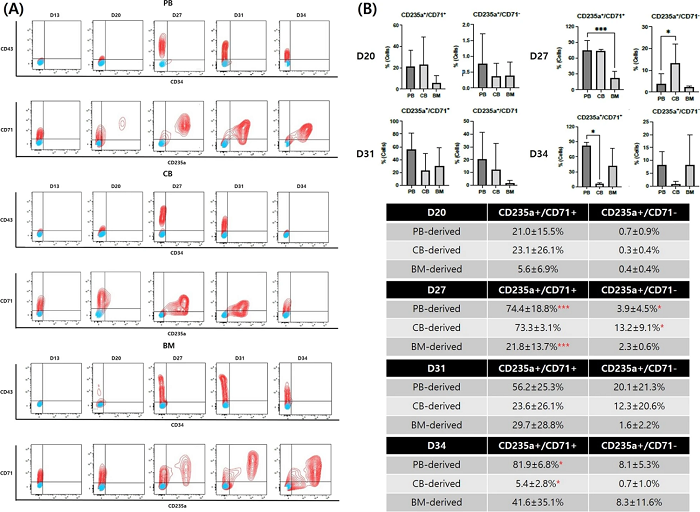Induced pluripotent stem cells (iPSCs) technology is a great breakthrough in stem cell reprogramming field. They have great potential to differentiate into any cell types to cure diseases, reverse injuries and offer highly targeted therapies to improve health outcomes. iPSCs have generated a lot of interest and research in drug development and cell therapy. Blood cells differentiation from iPSCs paves the way for future development of hematologic diseases and allogeneic transfusion products. With years of experiences and advanced technologies, Creative Biolabs offers various differentiated cell lineages and commercial iPSCs products.
Originating from somatic cells, iPSCs can be reprogrammed back into embryonic-like pluripotent stem cells which are capable of unlimited, undifferentiated proliferation in vitro and still maintain the capacity to differentiated into different cell types. Advances in somatic cell reprogramming help the iPSCs open the door to generating specific cells for cell therapeutic purposes. The differentiated iPSCs can apply to disease modeling, drug screening, toxicity testing, regenerative medicine, and tissue engineering applications. The process of iPSCs generation and differentiation include:
Red blood cells generated from human induced pluripotent stem cells enable the safe transfusion of a great number of immunized patients. The cultured RBC produced ex vivo from hematopoietic stem cells originating from bone marrow, peripheral blood or cord blood.
Creative Biolabs offers a wide range of custom iPSC-derived blood cells differentiation products and services for our clients. Our broad technology platform provides optimized tools for each step of the stem cell workflow.
We have built up expertise in iPSCs research. To recreate effective differentiation of iPSCs, we offer a wide range of chemical or physical signals that can induce cellular differentiation.
iPSCs differentiation to specialized cells need professional guidance and expertly optimized growth media for their successful culture and propagation. The efficient differentiation of human iPSCs into functional relevant cell types is an important prerequisite for the successful development of iPSC-based treatment and modeling strategies. With hundreds of successful cases, we can offer customized iPSC-derived differentiated blood cells along with specialized growth media. The origination of our provided iPSCs come from healthy donors and patients of specific disease backgrounds. We can also reprogramme the somatic cells you specially provided.
We provide cost-effective services to training and guide investigators in the creation of blood cells from your iPSCs. Creative Biolabs has extensive experience in reprogramming and cell differentiation from iPSC. The protocols are fully tailored to achieve both a high differentiation efficiency, and level of purity whilst retaining minimal lot-to-lot variation. These differentiated cells provide a highly desirable in vitro platform for high content toxicity and drug screening.
iPSC differentiation kit can be used to produce desired cell type by yourself. Now, we offer a series of products to support iPSCs differentiation. Our kits maximizes workflow efficiency and is applicable for drug toxicity and small molecule screening. It consists of a set of supplements that enable efficient differentiation of human pluripotent stem cells to ocular cells.
Creative Biolabs has successfully completed numerous iPSC-derived blood cells differentiation projects. We are happy to offer our off-the-shelf product portfolio and outsourced services to help you get landmark development. If you are interested in iPSCs differentiation, please contact us to discuss the needs of your custom project.
Below are the findings presented in the article related to blood cell differentiation from iPSC.
1. Youn Keong Cho, et al. used three different hematopoietic stem cell sources, including peripheral blood (PB), cord blood (CB) and bone marrow (BM) aspirates to establish hiPSC and differentiate them into RBCs. They identified and compared the differentiation characteristics of hiPSC from different hematopoietic stem cell sources using cytomorphometric analysis, flow cytometry analysis, immunofluorescence analysis, gene expression profiling, karyotyping, bead protein expression profiling, and oxygen binding. In flow cytometry analysis, experiments using antibodies against CD34-PE, CD43-APC, CD235a-PE, and CD71-APC showed that the cell population in all hiPSC lines transformed from hematopoietic stem cells to more mature RBCs over time, and that RBCs differentiation occurred at a similar time, with CB-derived hiPSCs showing the highest differentiation efficiency.
 Fig. 1 Flow cytometric analysis of hematopoietic and erythroid markers during differentiation.1
Fig. 1 Flow cytometric analysis of hematopoietic and erythroid markers during differentiation.1
2. The researchers generated iPSC from healthy fetal liver (FL) cells and produced homozygous primitive or definitive RBCs, which were directly compared to FL-derived RBCs. As shown, transcriptome analysis by scRNA-seq revealed a high degree of similarity between FL and iPSC-derived definitive RBCs, and very different patterns of gene expression and regulatory networks in the primitive RBCs. The similarity between FL and iPSC-derived definitive RBCs extends the potential application of definitive RBCs in diagnostic and transfusion products.
References
For Research Use Only. Not For Clinical Use.